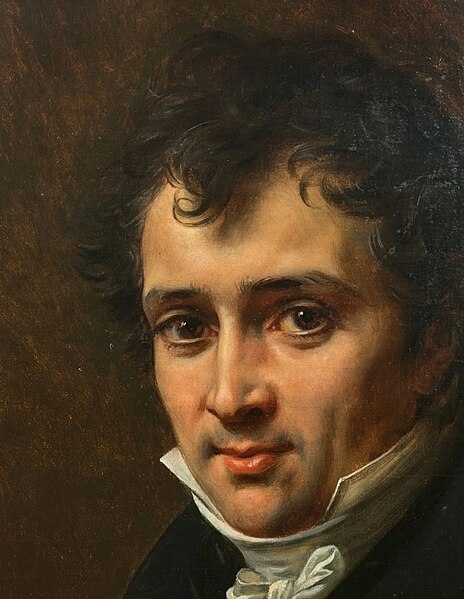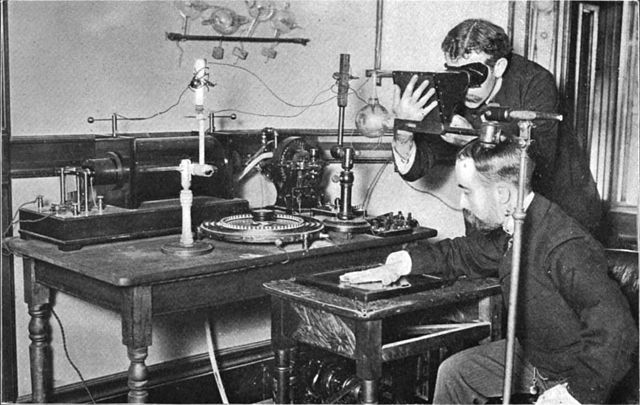Antoine Henri Becquerel was a French engineer, physicist, Nobel laureate, and the first person to discover radioactivity. For work in this field he, along with Marie Skłodowska-Curie and Pierre Curie, received the 1903 Nobel Prize in Physics. The SI unit for radioactivity, the becquerel (Bq), is named after him.
Portrait by Paul Nadar, c. 1905
Portrait of Henri's grandfather, Antoine César Becquerel, by Antoine-Jean Gros
Becquerel in the lab
Image of Becquerel's photographic plate which has been fogged by exposure to radiation from a uranium salt. The shadow of a metal Maltese Cross placed between the plate and the uranium salt is clearly visible.
Radioactive decay is the process by which an unstable atomic nucleus loses energy by radiation. A material containing unstable nuclei is considered radioactive. Three of the most common types of decay are alpha, beta, and gamma decay. The weak force is the mechanism that is responsible for beta decay, while the other two are governed by the electromagnetism and nuclear force.
Pierre and Marie Curie in their Paris laboratory, before 1907
Taking an X-ray image with early Crookes tube apparatus in 1896. The Crookes tube is visible in the centre. The standing man is viewing his hand with a fluoroscope screen; this was a common way of setting up the tube. No precautions against radiation exposure are being taken; its hazards were not known at the time.






